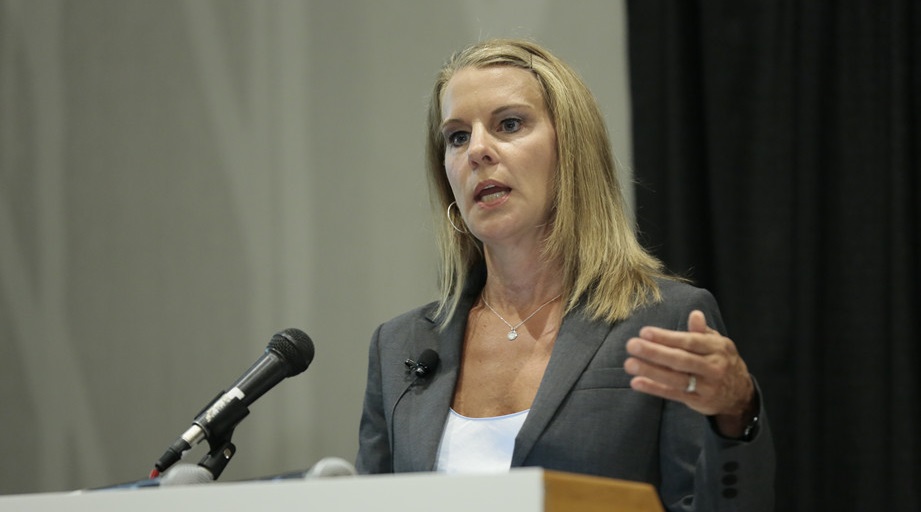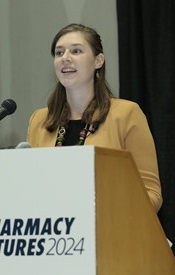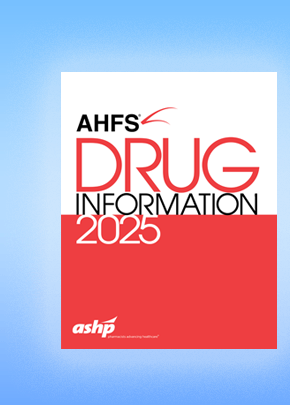
Clinical guidelines and evidence-based recommendations are great resources, but they don't drive practice change on their own, says Kaitlyn E. Watson, founder and CEO of Disaster Pharmacy Solutions in Alberta, Canada. Instead of simply promoting guidelines, Watson urged pharmacists to apply the principles of implementation science to help healthcare teams more quickly adopt beneficial patient care practices.

Watson said implementation science provides a systematic approach to understanding barriers to change and identifying solutions rather than using trial and error to attempt to force change.
She and Terri L. Jorgenson, national program manager for clinical practice integration and model advancement for the Department of Veterans Affairs (VA) Clinical Pharmacy Practice Office, illustrated the basics of implementation science at the June 11 Pharmacy Futures 2024 session Empowering Pharmacist Practice Change: Using Implementation Science Methods for Opioid Use Disorder.
What’s changing?
Jorgenson said the VA is facing both a shortage of primary care providers and a growing population of veterans, particularly those in rural areas, who need treatment for opioid use disorder (OUD). She said it’s preferable to provide OUD services in primary care settings instead of restricting the services to “addiction centers,” which are considered stigmatizing care sites.
“We want that no-wrong-door approach that meets patients where they are,” Jorgenson said.
- VA has a long history of deploying specialized clinical pharmacy practitioners (CPPs) as integral members of multidisciplinary care teams. And Jorgenson said there’s strong evidence that CPPs are highly effective at managing OUD and improving patient outcomes.
- The desired practice change, then, is to embed CPPs on interprofessional primary care teams to provide OUD services to veterans.
Understand the behavioral change
Just because there’s a pharmacist onsite doesn’t mean the physicians or nurses will refer patients to the pharmacist for OUD services. Watson said that’s the real problem — and it involves people and behaviors, not clinical knowledge.
- Watson said implementation science tackles this problem by focusing on “who needs to do what differently.”
- In this case, it’s the clinicians who need to change their behavior and refer patients to the CPPs.
What are the barriers (and facilitators) to change?
Watson facilitated an interactive exercise with the session attendees, asking them to identify and classify barriers to the acceptance of CPPs at primary care sites. The exercise used examples from the VA project and hypothetical scenarios.
- Environmental and resource barriers to change included staffing shortages and patient care needs that exceed the care team’s capacity. A perception that a CPP will help alleviate staff shortages was considered a positive facilitator for change, not a barrier.
- Social and professional role barriers included a lack of clarity about a CPP’s roles and responsibilities and why a CPP was needed. A perception that a CPP is the designated person for clinicians to consult about their patients’ medication-related problems was considered a facilitator for change.
- Emotional barriers included uncertainty about how the CPP’s work would affect other team members.
Watson emphasized that different people have different ideas about what constitutes a barrier or facilitator to change. But she emphasized the need to focus on the true problems that are affecting a project’s implementation.
For example, she said, a care site whose staff feel too overburdened to make referrals to a CPP doesn’t have a knowledge gap — the problem is an environmental and resource gap. In this instance, she said, the CPP needs to be presented as the solution to the resource problem.
Watson urged session attendees to investigate free interactive resources from The Center for Implementation to learn more about implementation science and how it can help drive change.
VA’s implementation of CPPs for OUD
Jorgenson said the VA team didn’t use implementation science methods for the OUD and substance use disorder project, which launched in 2020. She said the implementation process was structured, and it included clinical training in OUD management for CPPs, consultations and meetings with care sites, quality metrics, a marketing campaign to spread awareness of the program’s success, and other elements.
But Jorgenson is already thinking in terms of facilitators and barriers — and she said her team is using an implementation science approach for a newer medication management project.
For the OUD initiative, she said implementation science would have steered the team toward a more efficient facility-centric process instead of initially approaching the project mostly from a pharmacy lens.
Nevertheless, she said, VA now has 142 CPPs who are prescribing buprenorphine for OUD at 57 facilities, and the number is expected to grow.
“We feel pretty good about the direction we’re going,” she said.








